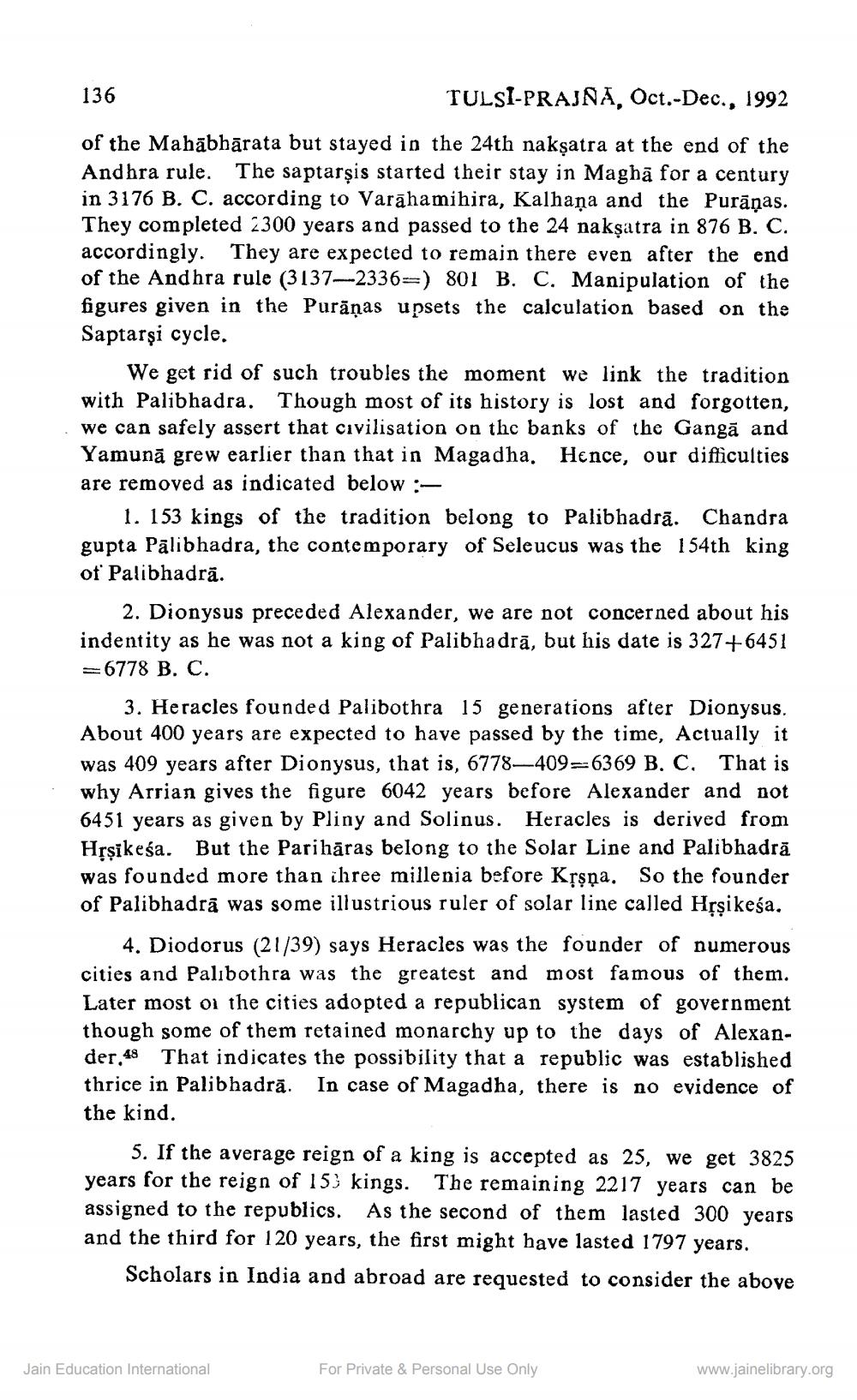________________
136
TULSI-PRAJNA, Oct.-Dec., 1992
of the Mahabharata but stayed in the 24th nakṣatra at the end of the Andhra rule. The saptarsis started their stay in Magha for a century in 3176 B. C. according to Varahamihira, Kalhana and the Purāņas. They completed 2300 years and passed to the 24 nakṣatra in 876 B. C. accordingly. They are expected to remain there even after the end of the Andhra rule (3137-2336=) 801 B. C. Manipulation of the figures given in the Purāņas upsets the calculation based on the Saptarsi cycle.
We get rid of such troubles the moment we link the tradition with Palibhadra. Though most of its history is lost and forgotten, we can safely assert that civilisation on the banks of the Ganga and Yamuna grew earlier than that in Magadha. Hence, our difficulties are removed as indicated below:
1. 153 kings of the tradition belong to Palibhadra. Chandra gupta Palibhadra, the contemporary of Seleucus was the 154th king of Palibhadra.
2. Dionysus preceded Alexander, we are not concerned about his indentity as he was not a king of Palibhadra, but his date is 327+6451 =6778 B. C.
3. Heracles founded Palibothra 15 generations after Dionysus. About 400 years are expected to have passed by the time, Actually it was 409 years after Dionysus, that is, 6778-409-6369 B. C. That is why Arrian gives the figure 6042 years before Alexander and not 6451 years as given by Pliny and Solinus. Heracles is derived from Hṛṣikeśa. But the Parihāras belong to the Solar Line and Palibhadrā was founded more than three millenia before Kṛṣṇa. So the founder of Palibhadra was some illustrious ruler of solar line called Hṛṣikeśa.
4. Diodorus (21/39) says Heracles was the founder of numerous cities and Palibothra was the greatest and most famous of them. Later most of the cities adopted a republican system of government though some of them retained monarchy up to the days of Alexander.48 That indicates the possibility that a republic was established thrice in Palibhadra. In case of Magadha, there is no evidence of
the kind.
5. If the average reign of a king is accepted as 25, we get 3825 years for the reign of 153 kings. The remaining 2217 years can be assigned to the republics. As the second of them lasted 300 years and the third for 120 years, the first might have lasted 1797 years.
Scholars in India and abroad are requested to consider the above
Jain Education International
For Private & Personal Use Only
www.jainelibrary.org




